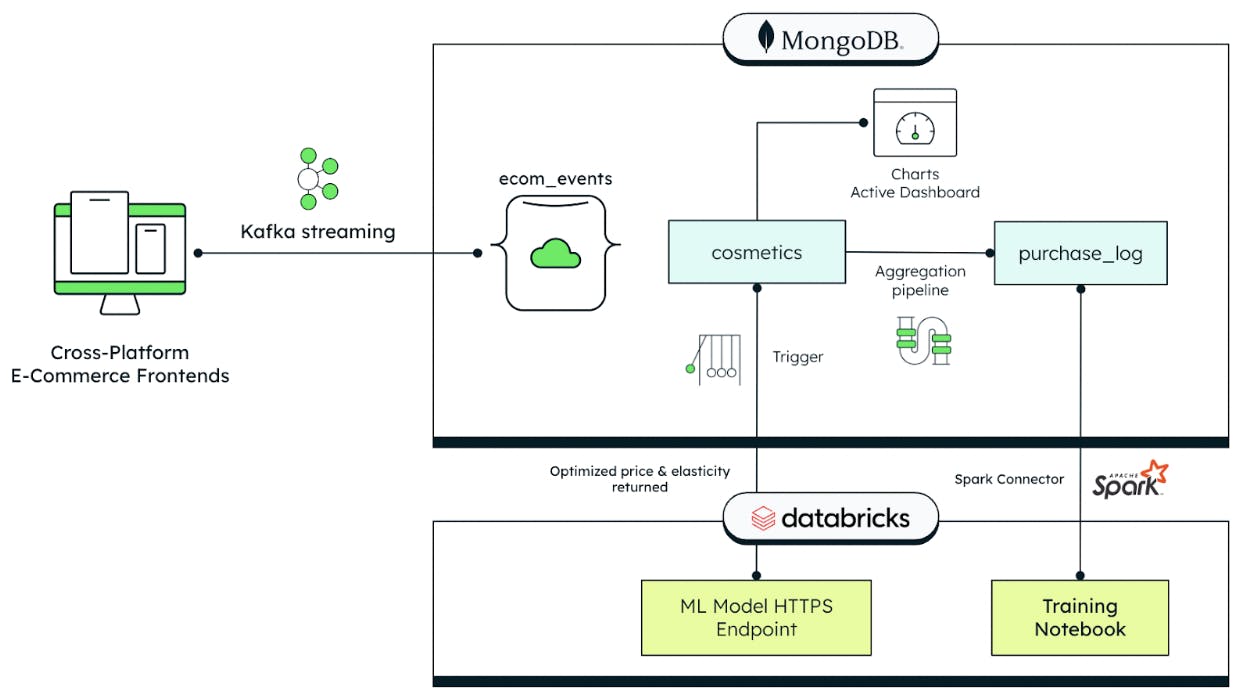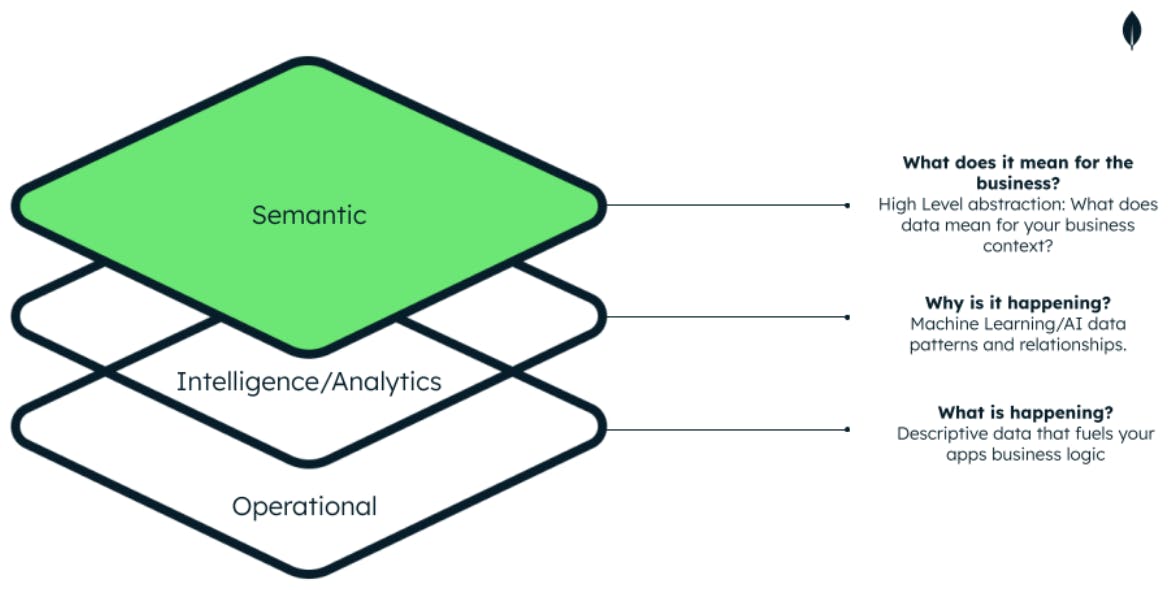Fueling Pricing Strategies with MongoDB and Databricks
Deploying real-time analytics solutions with the right tech stack can have transformative benefits. Retailers want to grow their brand name or improve customer experience with value based pricing, whilst remaining competitive and cost effective.
Despite their ambition to become “data driven” operations, companies often fail in their endeavors, at the core of this is the struggle to do real-time analytics.
We will explore the architecture in Figure 1 and discuss the advantages of integrating MongoDB Atlas and Databricks as a perfect pairing for retail pricing strategies using real time AI. The solution we’ll describe integrates concepts from Event Driven architecture in the data generation and ingestion side, real time analytics orchestration, machine learning and microservices. Let’s get started!

Reduce friction with flexibility
The pricing data complexity for a retailer with a diverse product line increases due to factors like seasonal sales, global expansion, and new product introductions. Tracking and analyzing historical prices and product offerings become more challenging as they change throughout the year.
Analytics solutions built around event driven architectures try to explain what is happening in a specific system or solution based on any significant occurrence such as user actions, data updates, system alerts, or sensor readings.
Deciding which occurrences are crucial to understand your customers and instrument your business model around that is when things start to become more intricate. Specially when trying to instrument your data models using traditional relational database management systems and its disadvantage when it comes to pairing that data structure with object oriented applications.
The inability of a retailer to adapt it’s data model to the customer behavior quickly translates into friction and a weaker presence in the market, for example poor pricing strategies compared to competitors because they lack information of historic price points and how they vary between products.

That friction is contagious throughout the whole value chain of an organization, affecting the semantic layer of business (a bridge between the technical data structures and business user understanding), generating data inconsistencies, and reducing time to insight.
The capacity of your conceptual data model to adapt to an ever changing customer behavior helps reduce that friction significantly as its flexibility allows for a more intuitive data modeling of real world events.
For your real time pricing strategies challenges, MongoDB Atlas document model with its embedding and extended reference capabilities becomes the perfect tool for the job, as it allows for faster feature development and stronger test driven growth and talent retention as a consequence.
In combination with it’s high performance queries and horizontal scalability the solution becomes robust as it will handle the high throughput of clickstreams on your ecommerce applications and yet be able to respond real time data driven decision making features.
Its ease of integration with other platforms thanks to strong API capabilities and drivers make it the perfect solution on top of which to build your business operational and intelligence layers as you’ll avoid vendor lock-in and data scientists can easily leverage AI frameworks to work with fresh data.
It’s distributed by default principle, plus following best practices principles guarantee your operational data layer will handle the workload needed. As the AI algorithms analyze vast amounts of historical and real-time data to make pricing decisions, having a distributed platform like MongoDB enables efficient storage, processing, and retrieval of data across multiple nodes.
From what? To why? The intelligence layer
To unlock meaningful market growth and achieve it at scale your analytics need to evolve from just understanding what is happening by querying and analyzing historical data, to understand why the events measured with your operational data layer are happening and even further try to forecast them.
For a pricing solution, retailers would need to gather historical pricing points data for their product lines and shape through ETL (Earn, Transform, Load) pipelines to feed machine learning algorithms. This process is often complicated and brittle using the traditional data warehousing approach, often incurring in data duplication making it difficult and costly to manage.

The advantage of using MongoDB Atlas as your operational data layer solution, is that through its Aggregation Pipelines you can shape your data in any way you need and then through MongoDB App Services, you can instrument Triggers and Functions to simplify this process and then consume that data in Databricks by leveraging the MongoDB Atlas via Spark connector.
Databricks provides you with a streamlined way of working with your models, by writing python code on hosted clusters notebooks. You can leverage its MLFlow integration to be able to register experiments which then can be turned into deployed models over an endpoint.
So transforming your data and integrating your operational layer, through connectors and API calls as triggers and functions, with your intelligence layer for machine learning and AI, you can easily build a pricing solution that will be able to generate market growth for your organization from its core through a semantic layer acting as a bridge between the technical aspects of data storage and the business requirements of data analysis.
Uncover new growth opportunities
Designing a real time analytics solution with MongoDB Atlas and Databricks is not only the fastest way to unlock your team's capabilities to devise pricing strategies, it also sets the cornerstone to build automated rules for more complex solutions.
Other ways of automating your retail application with AI driven insight could include: optimizing your marketing mix budget by each product price elasticity, adding another analytical layer of customer segmentation data to achieve targeted dynamic pricing, or optimizing your supply chain with sales forecasting in real time.
By taking advantage of MongoDB Charts or the MongoDB BI Connector, you can fuel your business dashboards, making that semantic layer of the business model the central point for your teams alignment.
Foundations for growth
Modern ecommerce sites unleash the power of real time analytics and automation to create better experiences for customers and a more profound approach to customer analytics by unblocking the power of machine learning to discover trends in behavioral data, effectively turning companies into automated growth machines.
If you want to discover how to build a simple dynamic pricing solution integrating MongoDB Atlas and Databricks make sure to read this guide.